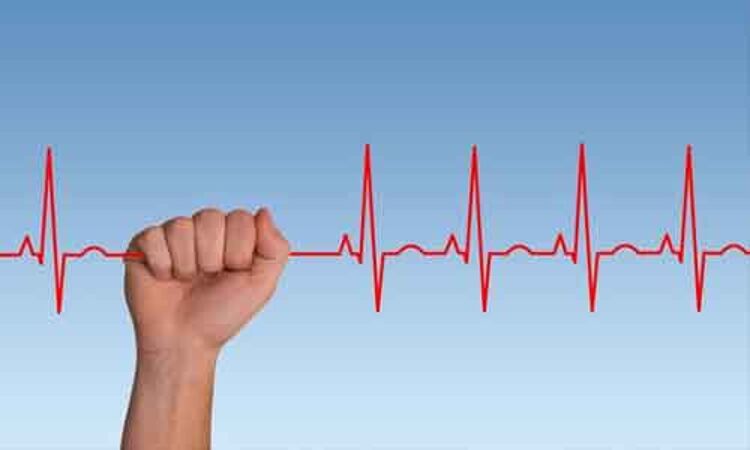- Home
- Medical news & Guidelines
- Anesthesiology
- Cardiology and CTVS
- Critical Care
- Dentistry
- Dermatology
- Diabetes and Endocrinology
- ENT
- Gastroenterology
- Medicine
- Nephrology
- Neurology
- Obstretics-Gynaecology
- Oncology
- Ophthalmology
- Orthopaedics
- Pediatrics-Neonatology
- Psychiatry
- Pulmonology
- Radiology
- Surgery
- Urology
- Laboratory Medicine
- Diet
- Nursing
- Paramedical
- Physiotherapy
- Health news
- Fact Check
- Bone Health Fact Check
- Brain Health Fact Check
- Cancer Related Fact Check
- Child Care Fact Check
- Dental and oral health fact check
- Diabetes and metabolic health fact check
- Diet and Nutrition Fact Check
- Eye and ENT Care Fact Check
- Fitness fact check
- Gut health fact check
- Heart health fact check
- Kidney health fact check
- Medical education fact check
- Men's health fact check
- Respiratory fact check
- Skin and hair care fact check
- Vaccine and Immunization fact check
- Women's health fact check
- AYUSH
- State News
- Andaman and Nicobar Islands
- Andhra Pradesh
- Arunachal Pradesh
- Assam
- Bihar
- Chandigarh
- Chattisgarh
- Dadra and Nagar Haveli
- Daman and Diu
- Delhi
- Goa
- Gujarat
- Haryana
- Himachal Pradesh
- Jammu & Kashmir
- Jharkhand
- Karnataka
- Kerala
- Ladakh
- Lakshadweep
- Madhya Pradesh
- Maharashtra
- Manipur
- Meghalaya
- Mizoram
- Nagaland
- Odisha
- Puducherry
- Punjab
- Rajasthan
- Sikkim
- Tamil Nadu
- Telangana
- Tripura
- Uttar Pradesh
- Uttrakhand
- West Bengal
- Medical Education
- Industry
3D ECG may help detect Paroxysmal Atrial Fibrillation, finds study

Atrial fibrillation is the most frequent arrhythmia in both equine and human athletes. Currently, this condition is diagnosed via ECG monitoring which lacks sensitivity in about half of cases when it presents in paroxysmal form.
Researchers have found in a new study that 3D ECG testing can potentially be used as a metric of an automated method for screening of paroxysmal atrial fibrillation.
Paroxysmal Atrial Fibrillation are episodes of AFib that occur occasionally and usually stop spontaneously. Episodes can last a few seconds, hours or a few days before stopping and returning to normal sinus rhythm, which is the heart's normal rhythm.
The American Heart Association and American College of Cardiology has classified Paroxysmal atrial fibrillation. as intermittent in nature, terminating spontaneously or within 7 days of treatment.
In order to improve the standardized output and thus the diagnostic value of the ECG, both in clinical practice as well as to increase the positive predictive value of artificial intelligence algorithms, the ECG electrode positions needs to be known and used in deriving the standard and correct ECG output. For the localization of the electrodes on the chest a 3D camera can be used . The use of such a camera has proven importance for the localization of cardiac arrhythmias.
In this study, researchers investigated whether the arrhythmogenic substrate—the preexisting condition that causes arrhythmia—present between the episodes of paroxysmal atrial fibrillation (PAF) can be detected using restitution analysis of normal sinus-rhythm electrocardiograms (ECG). In this case, ECG readings were taken during routine clinical work in horses with paroxysmal atrial fibrillation (PAF).
The findings of the study have been published in journal Function.
The data compiled in this research article suggest horses and humans have similar heart rate ranges. The study also points out the potential of a simple machine learning algorithm that allows for diagnostic markers, which are more difficult to quantify using conventional techniques.
The researchers concluded that three-dimensional ECG restitution analysis can potentially be used as a metric of an automated method for screening of paroxysmal atrial fibrillation (PAF).
Read the full article, "ECG restitution analysis and machine learning to detect paroxysmal atrial fibrillation: insight from the equine athlete as a model for human athletes," published ahead of print in Function.
Dr Kamal Kant Kohli-MBBS, DTCD- a chest specialist with more than 30 years of practice and a flair for writing clinical articles, Dr Kamal Kant Kohli joined Medical Dialogues as a Chief Editor of Medical News. Besides writing articles, as an editor, he proofreads and verifies all the medical content published on Medical Dialogues including those coming from journals, studies,medical conferences,guidelines etc. Email: drkohli@medicaldialogues.in. Contact no. 011-43720751


